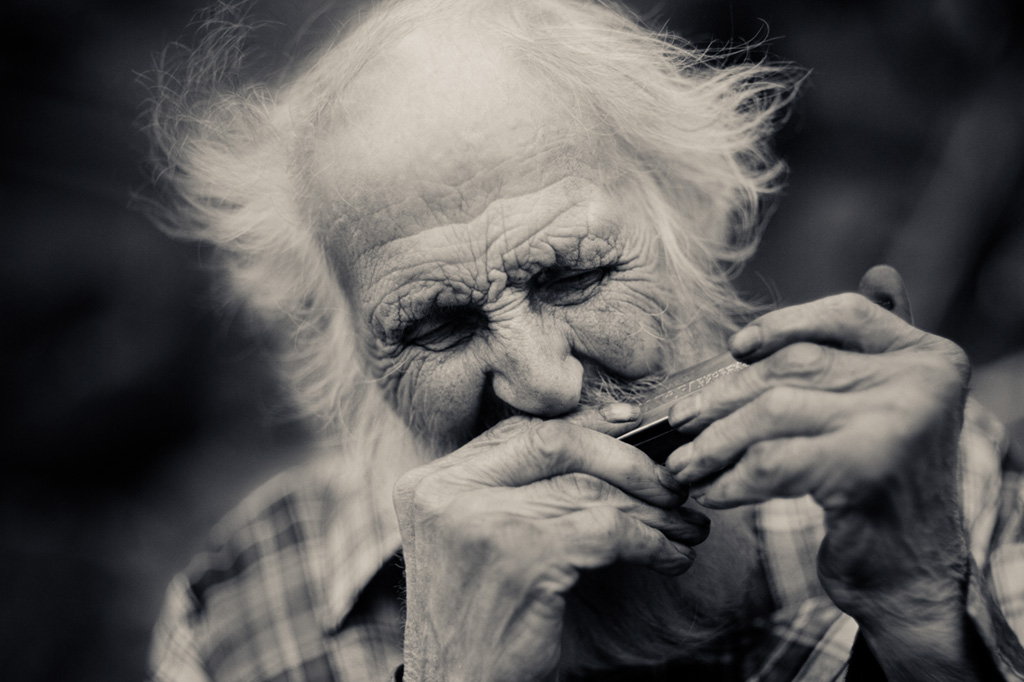The isolation of the Salmon Rivers—the Main and the Middle Fork—far from civilization in the heart of the Frank Church “River of No Return” Wilderness was a haven for some of the most colorful characters in Idaho history. They were hermits, or “solitaries” in the parlance of the day. They fiercely guarded their independence and way of life: off the grid without benefit of jet boats, electricity or other modern conveniences. These men and women became living legends, celebrated as icons of rugged Idaho individualism and frontier self-reliance.
Perhaps the best known of these canyon dwellers was Polly Bemis, the diminutive Chinese woman who was shipped to America and sold into slavery by her father in 1871. Legend has it that she was “won” in a poker game by Charlie Bemis, a saloonkeeper in the old mining town of Warren. She eventually married Bemis and spent the rest of her life on their homestead on the Salmon just downriver from Mackay Bar. If you know anything about Idaho river lore, then you’ve probably heard about Polly Bemis. But you may not know about Buckskin Bill, who lived upriver from the Bemis Ranch. Or Free Press Frances at Campbell’s Ferry. Or Dugout Dick, Cougar Dave, the Hermit of Impassable Canyon, Wheelbarrow Annie, Behind-the-Rocks Johnny, Wildhorse Cowgirl, The Ridge-runner or Doc Hisom.
Here are a few of their stories…
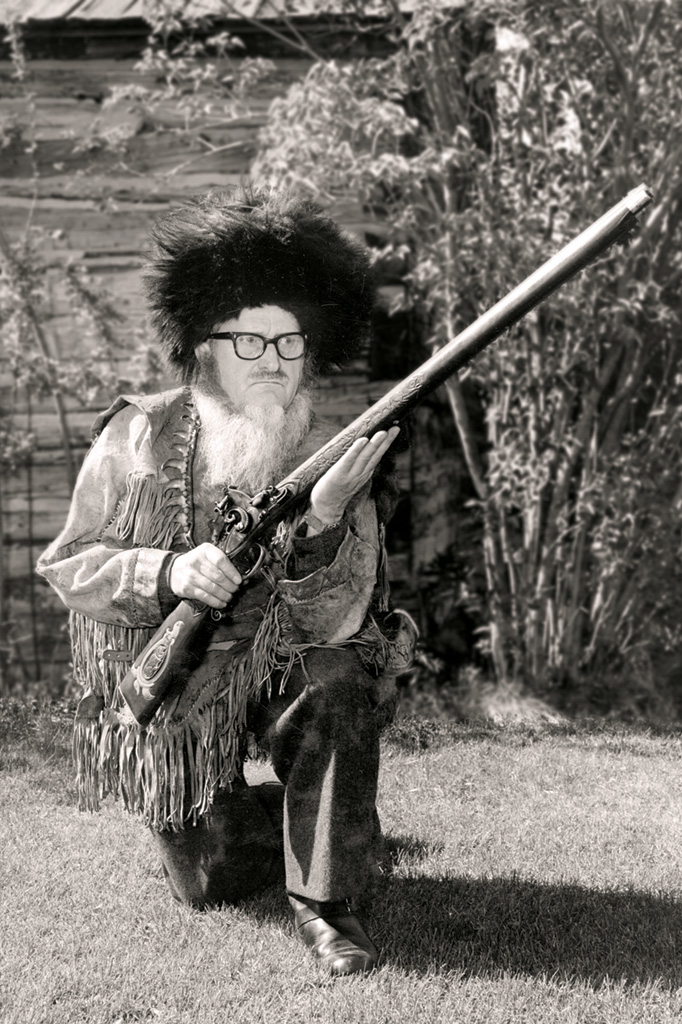
Sylvan Ambrose Hart, aka “Buckskin Bill.” Photo: 78-95-12B. Idaho State Archives.
Buckskin Bill
Buckskin Bill arrived on Five Mile Bar during the Depression in 1932 and lived on his bit of land until his death in 1980. Favoring headgear of a leather cap with horns, sporting black glasses, a long beard and buckskin leggings, he was dubbed “The Last of the Mountain Men” and was the subject of a National Geographic television special of the same name.
Born Sylvan Ambrose Hart in 1906, he graduated from the University of Oklahoma with a degree in literature. He found his way to Five Mile Bar where his nephew had bought a patented mill site and gave Hart four-tenths of an acre on the banks of the Salmon River. In those days he would have had to hike 96 miles over the mountains to Grangeville, which he did, for supplies.
Hart’s spacious compound, all of which he built or crafted by hand, was downright luxurious by hermit standards: he built a kitchen house and blacksmith shop, and a two-story dwelling. The first floor of his home, fashioned from wood and covered with stucco, served as his winter quarters. The second floor was his summer home. He could catch cool breezes on the balcony, and it sported a bay window made of a B-18 cockpit canopy that he had packed in on his back.
In 1966, a Sports Illustrated journalist, Harold Peterson, tracked him down and asked why he had come to this remote spot in the middle of the wilderness. Hart replied with sly humor, “I just like it so well I never came out. But I wouldn’t want to waste any time complaining about what passes for civilization. That’s too negative. You should be able to see what’s wrong about it with just a side glance, that’s all.”
He shot wild game for meat, animal fat grease, and clothing. He favored garments constructed from deerskin. As he told Peterson,” Now what is there about buckskin that you could get better on Park Avenue or Bond Street? Just this: a cold wind is what kills you in the mountains, but it can’t cut through a stag hide. And buckskin protects you from thorns. Know what those fringes are for? Not decoration. They let water run off faster!”
He tended a 10,000-square-foot garden—
fertilized by a buried deer, two bear heads and a cougar skeleton—which produced a bounty of fruits and vegetables: parsnips, carrots, beets, cabbage, squash, cucumbers, cantaloupes, straw–
berries, pear and apple trees, and horseradish. Twice a year, he brought in $50 worth of flour, sugar, coffee, oatmeal, rice and raisins on his
neighbor’s pack string. He paid for these by panning for gold during the summer. Peterson asked him if it were true that he used to go to town for
“nothing but tea, gunpowder and books.” Buckskin replied drily, “When its 40 miles to town on ropes and snowshoes, that’s about all you can carry.”
He was known for his exquisite craftsmanship of flintlock rifles, made, as Hart told Sports Illustrated, by using a “rotating helix driven by [his] fingers on a headblock nailed to the table.” He made his own bullets from bullet molds he crafted, as well as knives, copper pots and cherry wood bowls. These items and more still litter his home and outbuildings, which are part of a living museum maintained by a German couple who came to the canyon in 1981.
Buckskin Bill may have been one of the few people in the country to have taken on the IRS, and won. Apparently, the fearsome agency had sent a slew of letters threatening dire consequences if he didn’t pay up on back taxes. Buckskin received government checks, not bothering to cash most of them. He never earned more than $500 in a year from his work as a Forest Service fire lookout, so didn’t see the need to file taxes. Clearly the IRS disagreed. According to author Cort Conley, as reported in his book “Idaho Loners,” Buckskin “… togged himself out in bearskin britches, a bear claw necklace, shouldered his tent, sleeping bag,
a sack of jerked venison, picked up his rifle and traveled out to McCall and on to Boise.”
He presented himself at the IRS office, and “surrendered.” According to Conley, he even allowed as to how “he was ready to go to prison and had even brought his own pemmican.” The bureaucrats took one look at this character with his horned leather cap, long white beard and intelligent gleam in his eye, and sent him on his way, promising not to bother him again.
The article in Sports Illustrated brought Buckskin Bill fame and notoriety. He took it all in stride with good humor and delighted in exaggerating his mountain man persona. In 1978, outfitted in a coonskin hat, buckskin clothing and his bear claw necklace, he flew to Boise to throw the first pitch for a new baseball team, the Boise Buckskins.
In 1980, just shy of his 74th birthday, he died in his cabin the same way he had lived: alone.
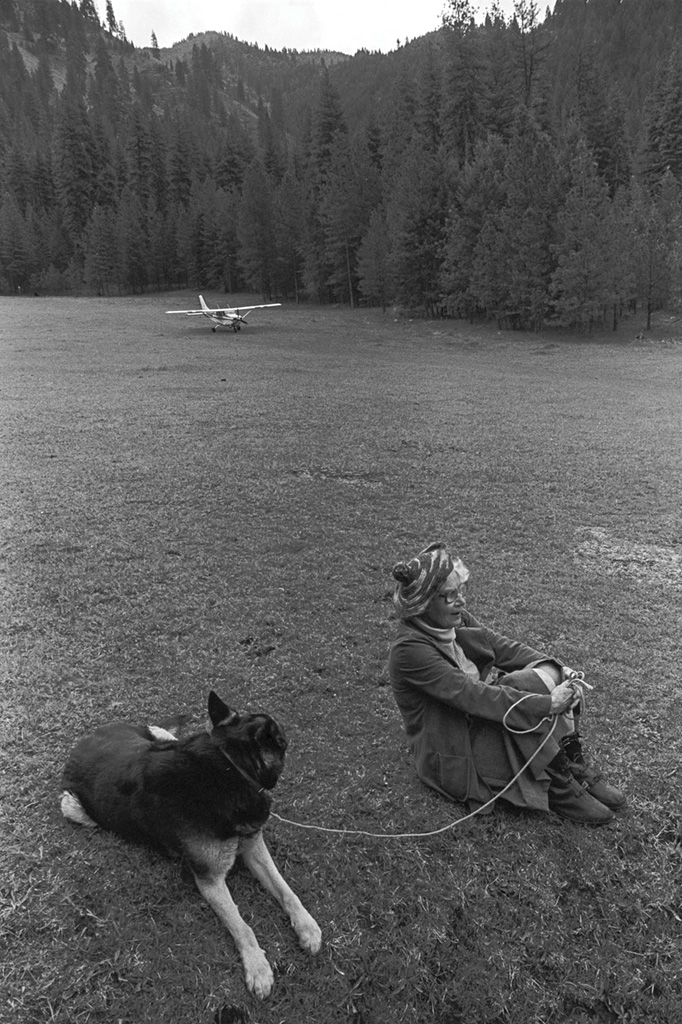
Frances Zaunmiller waits for the mail, Campbells Ferry, 1981. Photo by Glenn Oakley.
Free Press Frances
Lydia Frances Coyle lived for 46 years in a log cabin by the Salmon River in the heart of what was then the Idaho Primitive Area. She outlived three husbands (deliberately outran the first), resisted running water, and successfully pressured the federal government into allotting funds for a bridge across the river.
She was born in 1913, and, as a young woman, worked as a telephone operator in Beeville, Texas.
In 1938, she married a man named Charles Gamble. When it came to light that the source of Gamble’s money was a counterfeit ring, Frances fled, landing in Idaho. In Salmon, she took up with a fellow named Bert Rhoades who was subsequently arrested for poaching game. Frances was jailed as well but released soon thereafter and disappeared into the wilderness.
After working for a time on the Stonebraker Ranch in the Chamberlain Basin of central Idaho, she happened across Joe Zaunmiller leading a pack string up the Three Blaze Trail. She asked him if he knew of anyone who needed a ranch hand. He hired her on the spot. Little did she know that, in 1942, Joe would become her husband, and she’d spend the rest of her life at Campbell’s Ferry on the Salmon River.
Frances helped Zaunmiller run a cable ferry boat across the Salmon, in addition to chopping wood, canning fruits and vegetables from a large orchard and garden, haying the alfalfa field, raising ducks and chickens, and repairing the system of irrigation ditches that ran through the ranch. From May through September, Frances worked the ranch alone while Joe was employed as a packer for the Payette and Nez Perce National Forests. Photographs from that time show her dressed in skirts and dresses, despite the rigorous demands of daily life on the remote ranch.
In 1945—in her spare time—she began to write a weekly column about living in the backcountry for the Idaho Free Press, a newspaper in Grangeville. (Initially sent by overland mail, the columns traveled four miles downriver to the Dale Ranch, then along a primitive road to Dixie and another 60 miles to Grangeville. After 1958 and the building of an airstrip at Campbell’s Ferry, the columns went by air.) Always describing herself in third person, she explained why she turned down her husband’s offer to pipe running water into the cabin:
“For years, Joe wanted to put running water in the house but she doesn’t want it. Running water would make a lot less work, but Joe doesn’t promise that the little water ditch that talks its way past the cabin door would not be taken away – so she will keep the ditch and listen to the water tell its tales of the places it has been. You should hear it brag sometimes!”
A neighbor once kindly installed a generator and wired the cabin for electric lights. Frances listened to the hum of the generator for just one night before she decided it made too much racket. Some 30 years later, the ceramic fixtures and bulbs still hung, unlit, from the cabin ceiling.
Frances used the popularity of her weekly column to agitate for improvements to Campbell’s Ferry. She started a letter-writing campaign to Idaho’s two senators for a bridge to replace the ferry until Sen. Henry Dworshak sponsored a bill. It was through Frances’ efforts that the Congress paid for a bridge in the wilderness where any kind of new construction was banned.
She also succeeded in bringing mail to canyon residents via a weekly backcountry plane in 1958. (She once received Christmas presents in August because the overland mail was so infrequent and unreliable.) Because the airstrip was on a slope facing the river, in the winter Frances would tamp down new snow with her snowshoes before the small plane could land.
After Zaunmiller passed away in 1962, the couple’s long-time friend Vern Wisner moved onto the property to help Frances. He and Frances married and enjoyed seven contented years until Vern’s death. She lived another 12 years on the ranch by herself until her death in 1986, engulfed in loneliness for perhaps the first time. A story in the Los Angeles Times brought Frances to the world’s attention, and while she zealously guarded her privacy, she was happy to give interviews when she felt like it. She had strong opinions and wasn’t afraid to share them. If you were lucky, she’d welcome you as a visitor. If not, she’d send you packing back into the wilderness with the sharp edge of her tongue!
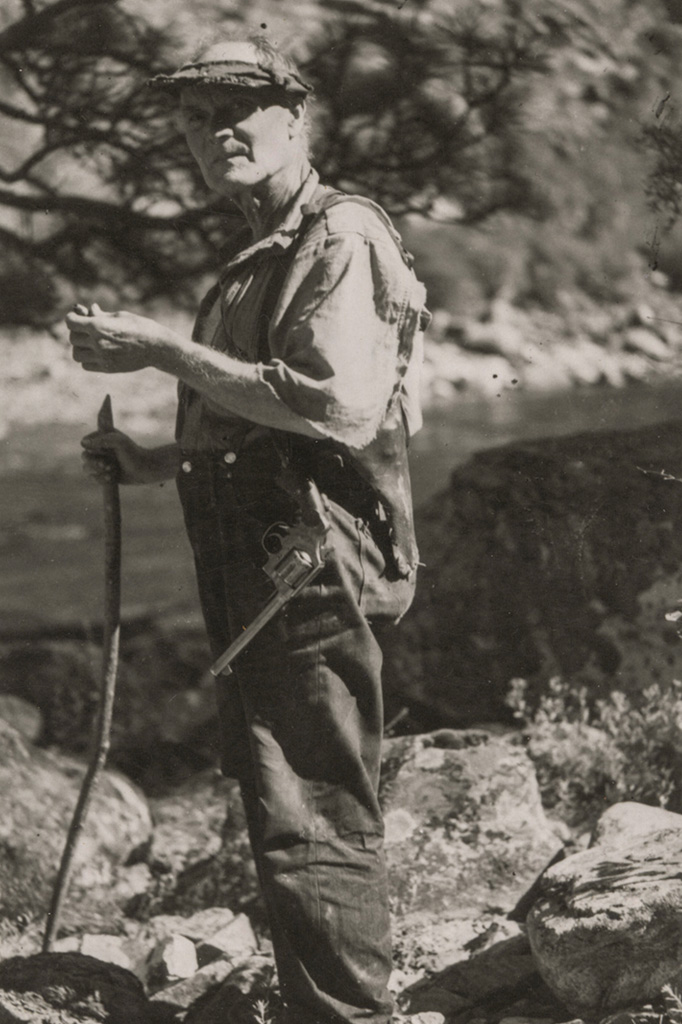
Earl Parrott with his pistol, on the Middle Fork of the Salmon. Photo: Used with Permission of Cort Conley.
The Hermit of the Impassable Canyon
Earl Parrott was born in Iowa in 1869, and after short stints as a Western Union telegraph operator in Florida and prospector in the Yukon Gold Rush of 1897 he made his way to Idaho by 1900. Letters to his brother Allen trace his travels from Lewiston to Warren (where Charlie Bemis was the saloonkeeper) to the mouth of Elk Creek on the South Fork of the Salmon during the winter of 1916. As Conley relays in “Idaho Loners,” Johnny Carey, who visited Parrott that winter described Parrott as “…intelligent and industrious, he was also aloof, stubborn and lacking in humor. Nor was he fond of children.”
By 1917, Parrott was situated with a tiny cabin on the steep cliffs towering above the Middle Fork of the Salmon River, a section of river deemed the Impassable Canyon. As shy as a wolverine, Parrott was the quintessential hermit, happily subsisting off what he could hunt and grow and panning for gold dust. Parrott’s camp was 1,000 feet up the cliffs, nestled in a hanging valley with a creek running through it. He nimbly scrambled up and down the cliffs on a series of hand-hewn log ladders perched against the rock walls.
His garden was large and lush. He irrigated from the creek and saved his seeds to plant the next year. He raised corn, beans, sweet potatoes, cabbage, carrots, peppers, squash, raspberries, strawberries, watermelons, peaches and apricots. He dried and stored the vegetables and berries and hollowed out two yellow pine logs in which he kept his corn and beans. He dug a root cellar for his potatoes. The hermit once said the only other supplies he needed were salt, matches, tea and bullets, for which, once a year, he would trek the 70 miles into Shoup, the nearest town.
In 1936, Dr. R.G. Frazier of Utah was part of a boating expedition team who happened on Parrott’s lower shed and climbed his ladders to the rim, surprising the recluse. Frazier described him as “about five feet, four inches, muscular, blue-eyed and clean shaven … clad in tattered denim trousers with buckskin suspenders, a buckskin shirt and shoes with tire-tread soles and buckskin tops.” Parrott told his visitors they were his first in 37 years.
Frazier wrote about his encounter with the hermit for Field & Stream and the Salt Lake City Deseret News. One of the articles was reprinted in the Oregonian, which caught the eye of Parrott’s brother Allen, whom he hadn’t seen in 38 years. In August 1936, Allen ventured from Starbuck, Wash., to the Salmon River, then over Stoddard Pack Bridge and by trail to Parrott’s place. He later wrote to his sister-in-law, Julia, in Vermont: “I think he is somewhat of a wild man or might say good old frontier days folk, and not to be wondered at when you think he has lived back there all this time by himself. Probably not seen another person once in six months or a year. Had a nice visit, hated to leave him there alone.” Parrott was 67 years old at the time.
In July 1939, Frazier again boated the Middle Fork and stopped to see Parrott, who didn’t appreciate the intrusion. The only existing film of Parrott was shot during this visit. Frazier’s colleague, Charles Kelly, noted in his diary that Parrott said, “If he knew we were coming he would have hidden out. Don’t like company. Says he used to go two years without seeing anyone, but now hunters disturb him every few months … Has to go five miles now to hunt deer in the fall. Country is getting too crowded. Used to go 70 miles for supplies. Now goes 10 miles to CCC camp [Civilian Conservation Corps] and bums a ride to town … Don’t like radio. Would rather hear the coyotes howl.”
Earl Parrott died in the town of Salmon following complications from a stroke in August, 1945. He was 76 years old.
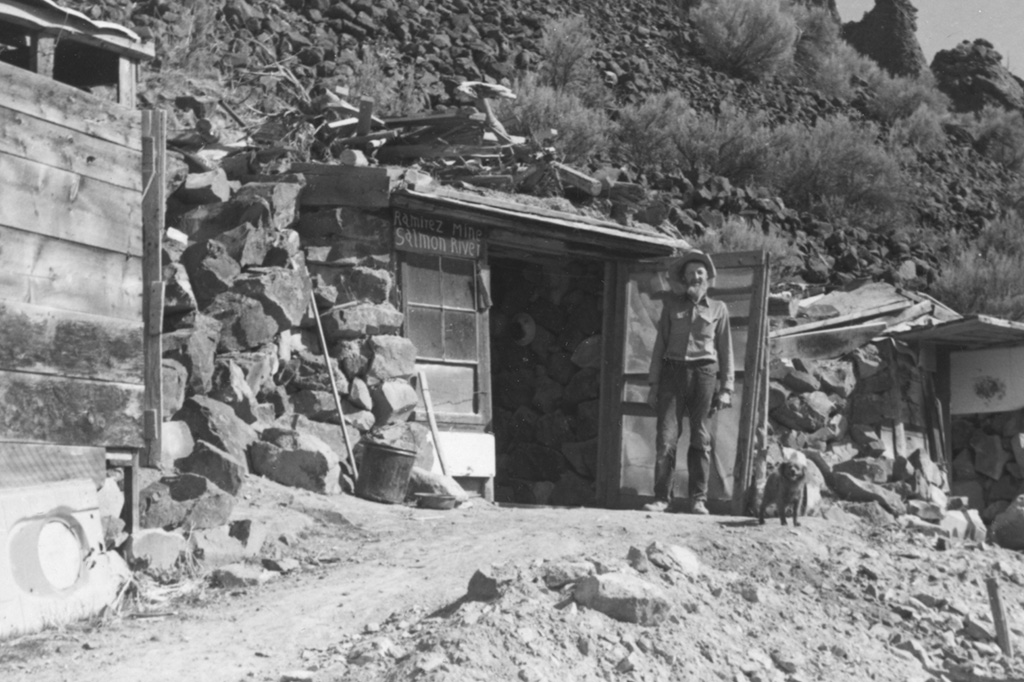
Richard Zimmerman and his cabin on the Salmon River, c. 1974-78. Photo: Frank Church Papers, Special Collections and Archives, Boise State University.
Dugout Dick
Known as the Salmon River Caveman or Dugout Dick, Richard Zimmerman lived in a series of caves he dug by hand—some
60 feet deep—out of mountain rockslides above the Salmon River. He sparkled with in-genuity, a sense of humor, and an appreciation
for visitors.
In 1934, leaving a tyrannical father and unhappy home life behind in Indiana, Zimmerman rode the rails, cowboyed in Montana, and herded sheep for several ranches in Idaho. In 1942, he joined the Army and drove a truck in the Pacific theater of World War II. In the fall of 1947, he drove his old Buick into the Lemhi Valley on the Salmon River road, 18 miles south of the town of Salmon. He squatted on a piece of BLM land below a hill of scree and rockslide, and discovered that a cave would make just what he wanted in a “home”: cool in the summer and warm in the winter.
He described his caves to Conley during a visit: “Most of my buildings are roofed flat with peeled fir poles over 18-inch timbers. Topped with two or three feet of dirt and mud. I cover them with tarpaper and aluminum from an old house trailer, then lay carpet topped off with tires. My goat herd can bed down up there. (A nanny butted him off the roof in when he was 65, breaking his hip.) The outside front of my house is logs but the other three sides are rock.” An early proponent of recycling, he used old car windshields as windows. His personal domicile boasted scavenged carpet and linoleum as flooring, a wood stove, a tube pipe that brought fresh water from a spring and a solar collector that ran his radio.
He dug a total of 14 structures with a pick, shovel, and pry bar. His caves were visible from Highway 93 across the river and being a sociable man, he ventured into an early form of Airbnb. He realized he could make a living by renting out his caves for $5 a night or $25 a month (up from his initial rate of $2 a night and $20 a month). “I’m in the tourist business,” he once told the Idaho Statesman. “I made $40 the other day. And the Army’s started sending me money every month. I’m livin’ high on the hog now!”
Zimmerman married once, to a woman from Mexicali who was his pen pal in a lonely-hearts club. It didn’t take. He told Conley, “She had no taste for goat meat or Rye Krisp, nor any inclination to work in the garden. ‘If you really loved me,’ she said, ‘you’d build me a house across
the river.’” He declined, and she hitchhiked south.
A man of many talents, he could pick his guitar and blow his harmonica simultaneously, while dancing a clumsy jig. Because he had a delicate digestion, he couldn’t eat bread, meat, or sugar. With his goats for milk and his garden for fresh vegetables, he did not lack for food. He learned to make yogurt from stinging nettles, ate corn tortillas cooked in wine, drank spud beer, carrot juice and lemon juice, and ate garlic. He sold vegetables and fruit leather in town.
“I have everything here,” he once said. “I got lots of rocks and rubber tires. I have plenty of straw and fruits and vegetables, my dog and my cats and my guitar. I make wine to cook with. There’s nothing I really need.”
Dugout Dick’s fame spread over the globe. He was featured in National Geographic, appeared on “Good Morning America,” and turned down offers to appear on “The Tonight Show.” Television crews and journalists clamored to chronicle the quirky Caveman of the Salmon River.
Zimmerman lived in his caves for over 60 years and died in 2010 at the age of 94.
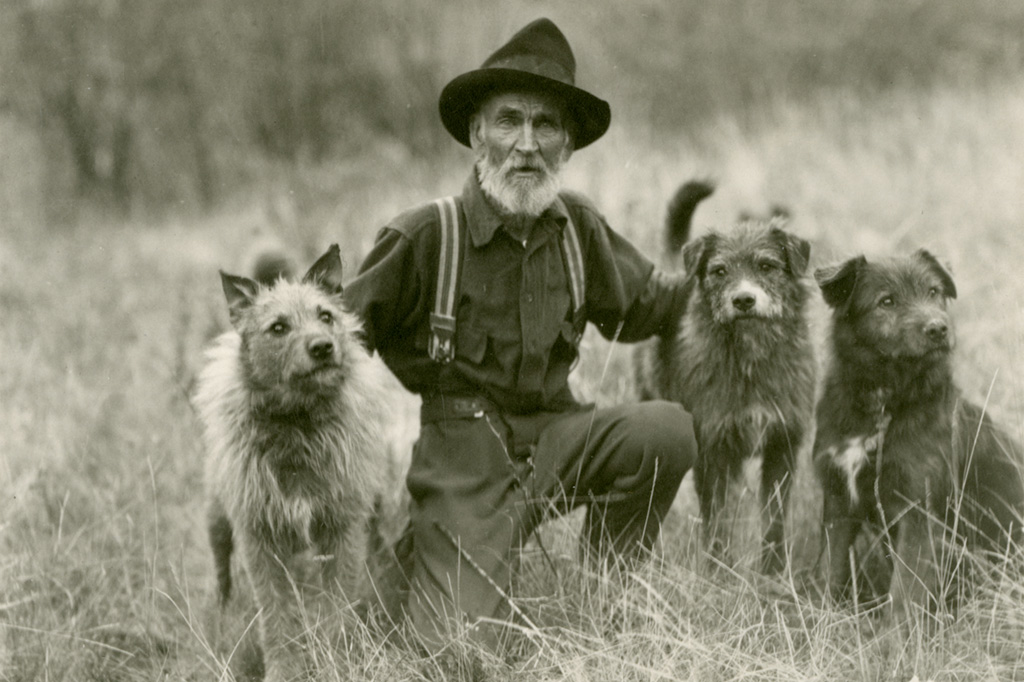
Dave Lewis and his best three cougar dogs, Frank Church-River of No Return Wilderness, 1928. Photo: Ansgar Johnson Sr. MS269-B1F22-pg09. Idaho State Archives.
Cougar Dave
Dave Lewis was born in Wales in 1844 and emigrated to the United States four years later. Not much is known about his early years, except that he was a slight man with a penchant for telling tall tales. He claimed to be 10 years older than he was and claimed to have fought in the Civil War at the Siege of Vicksburg with Wild Bill Hickok. Research showed that Lewis was prone to exaggeration.
Lewis built a cabin on Big Creek, a major drainage into the Middle Fork of the Salmon, in 1909. It was there that he earned his moniker, Cougar Dave. He made his living by killing cougars, also known as mountain lions, for the bounty paid by the state. Between the bounty and the pelt, Lewis could make about $35 per cougar. He claimed to have bagged 500 during his years as a hunter. Perhaps he was stretching the truth, but in 1922, the Idaho Statesman reported, “Mr. Lewis brought to Boise the pelts of 14 cougars, 15 coyotes, 2 bobcats, 2 foxes and 4 mink, all of which were caught last winter.” It was the first time that Lewis had been in Boise since 1878. The Statesman story continued,” Mr. Lewis is a little man and speaks with the slow drawl of the mountaineer. ‘You know,’ he said, ‘you see the same folks on the street every day and it just makes a fellow wonder what they all do to make a living.’ “
Conley described Lewis as “an avid reader in winter; books filled a dark hole in his isolation. He lived alone in his log 15-by-15-foot cabin under a roof insulated with six inches of dirt.” A visiting surveyor described a second room in the cabin, “cobwebs and dust everywhere” that Lewis never ventured into. In it, he found a large framed portrait of “a beautiful young woman” with its face to the wall. Apparently, the girl had spurned Lewis’ marriage proposal 50 years’ before, and his cracked heart never fully recovered.
In 1934, Cougar Dave sold his homestead to Jess Taylor for $1,200. (The University of Idaho later acquired the Taylor Ranch as a research station.) In 1936, Lewis contracted pneumonia and, at the age of 93, rode his horse 25 miles to seek help at the Big Creek Ranger Station. He died at the VA Hospital in Boise a few days later. In his obituary, the Statesman reported, “Last fall he complained that the country was settling up too fast. ‘A man don’t have no privacy no more,’ he told his nearest neighbor—five miles away.”

